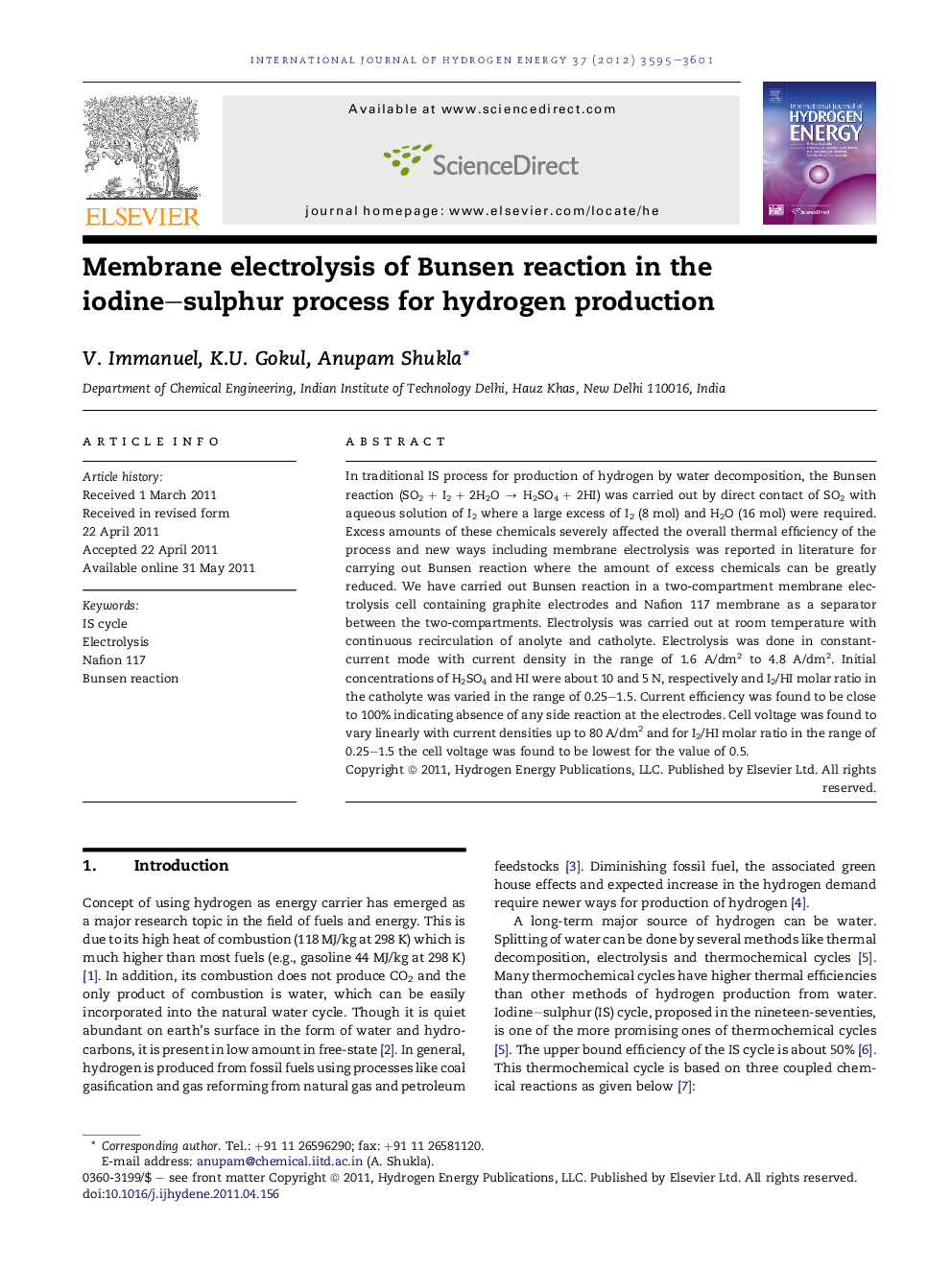| Article ID | Journal | Published Year | Pages | File Type |
|---|---|---|---|---|
| 1282368 | International Journal of Hydrogen Energy | 2012 | 7 Pages |
In traditional IS process for production of hydrogen by water decomposition, the Bunsen reaction (SO2 + I2 + 2H2O → H2SO4 + 2HI) was carried out by direct contact of SO2 with aqueous solution of I2 where a large excess of I2 (8 mol) and H2O (16 mol) were required. Excess amounts of these chemicals severely affected the overall thermal efficiency of the process and new ways including membrane electrolysis was reported in literature for carrying out Bunsen reaction where the amount of excess chemicals can be greatly reduced. We have carried out Bunsen reaction in a two-compartment membrane electrolysis cell containing graphite electrodes and Nafion 117 membrane as a separator between the two-compartments. Electrolysis was carried out at room temperature with continuous recirculation of anolyte and catholyte. Electrolysis was done in constant-current mode with current density in the range of 1.6 A/dm2 to 4.8 A/dm2. Initial concentrations of H2SO4 and HI were about 10 and 5 N, respectively and I2/HI molar ratio in the catholyte was varied in the range of 0.25–1.5. Current efficiency was found to be close to 100% indicating absence of any side reaction at the electrodes. Cell voltage was found to vary linearly with current densities up to 80 A/dm2 and for I2/HI molar ratio in the range of 0.25–1.5 the cell voltage was found to be lowest for the value of 0.5.
► Membrane electrolysis can be used for Bunsen reaction with much lower excess iodine than used in direct contact method. ► Current efficiency is close to 100% indicating absence of side-reactions. ► Cell voltage shows a minimum at I2/HI ratio of 0.5 in the catholyte. ► Cell voltage increases with increase in concentration of sulphuric acid in anolyte.
